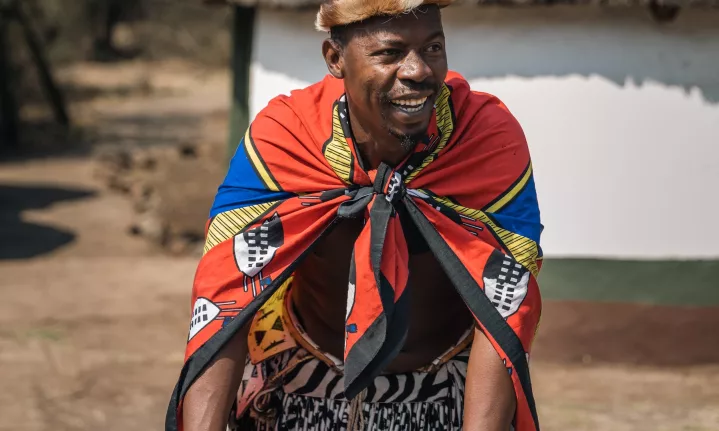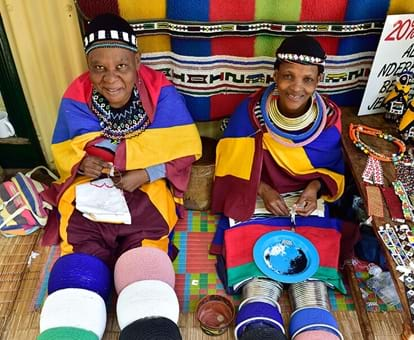South African Culture Today for Dummies
South African Culture Today for Dummies
Blog Article
South African Culture Today Fundamentals Explained
Table of ContentsSouth African Culture Today for DummiesThe Best Guide To South African Culture TodaySouth African Culture Today for BeginnersThe Single Strategy To Use For South African Culture TodaySouth African Culture Today Fundamentals ExplainedSouth African Culture Today - The Facts
An issue of importance in Zambian villages is the passing away of liked ones. All participants of the village put cash, time and initiative with each other for the interment of the deceased.During the mourning period; guys stay outside your house and the females remain inside your home of the deceased. After talking about the departed, the village walks to the location of funeral to say their last goodbyes. Songs and dancing is an extremely essential aspect of the Zambian society. The different tribal units have their very own dancing kinds; however, makishi prevails among all people.
South African Culture Today - Truths
When it comes to songs, drums are used the most, with a range of drumming events. In Zambia, bulk of the people are Christian; Protestant and Roman Catholic. There are little groups of Muslims and Hindus, with the remainder adhering to regional native tribal ideas.

South African heritage and society is profoundly varied, and consists of various teams of people who each have their own practices and ideas. Having such a diversity of individuals and cultures is what makes South Africa so special. In the true feeling of the phrase, we are a rainbow nation.
Making it the 7th on the listing of nations with the most Portuguese individuals in it outside of Portugal. Portuguese is not only a society, but it is likewise a language and a citizenship. Portuguese people originate from the nation of Portugal in Europe, however, due to Portugal (like lots of various other countries in Europe) discovering the world and overcoming other countries during the 15th 20th centuries, South Africa has what we call Portuguese South African's living in it.
Some Of South African Culture Today
Among the prominent features of the topography is a plateau that covers practically 2 thirds of the facility of the nation. The plateau facility rises toward the southeast, where it climaxes in the Drakensberg variety, part of an escarpment that separates the plateau from the coastal areas. The Drakensburg includes Champagne Castle, the greatest top in the nation.
The area north of the Witwatersrand, called the bushveld, inclines downward from east to west toward the Limpopo River, which develops the worldwide boundary. The western area of the plateau, the middleveld, also descends in the direction of the west and varies in elevation in between the highveld and bushveld. In between the Drakensburg and the eastern and southerly shoreline, the land descends to the sea.
Nearer the coast there is a low-lying level called the eastern lowveld. Southwest of the plateau the nation becomes gradually more dry, paving the way to the hostile desert of the Great Karroo, verged on the east by the reduced, much better sprinkled plateau of the Little Karroo. Separating the completely dry southerly interior from the sandy littoral of the southerly shore and West Cape is an additional array, the Langeberg.
Some Known Details About South African Culture Today
The country's racially, ethnically, and politically divided background has produced nationwide and subnational symbols that still operate as signs of the nation, and others symbols that are approved only by particular groups. The monoliths to white settler conquest and site web political supremacy, such as the Afrikaner Voortrekker ("pioneer") Monument in Pretoria and the Rhodes Monolith honoring the British colonial realm home builder and Cape head of state Cecil Rhodes, stay sectarian signs.
The initial modern-day occupants were the San ("bushman") hunter-gatherers and the Khoi ("Hottentot") peoples, that rounded up animals (South African culture today). The San may have existed for hundreds of years and left proof of their visibility in thousands of ancient cave paints ("rock art"). Bantu-speaking clans that were the ancestors of the Nguni (today's amaZulu, amaXhosa, amaSwazi, and vaTsonga individuals) and Tswana-Sotho language groups (today's Batswana and Southern and Northern Basotho) moved below east Africa as very early as the fifteenth century

Both previous republics of the Orange Free State and Transvaal (South African Republic) were established by Afrikaner settlers who defeated and dispossessed the Basotho and Batswana. Lesotho would have been forcibly incorporated into the Orange Free State without the expansion of British protection in 1869. The supreme unification of the country arised from the South African War (18991902) between the British and both Afrikaner republics, which decreased the country to mess up at the beginning of the twentieth century.
Afrikaners historically considered themselves the just true South Africans and, while giving full citizenship to all locals of European descent, refuted that standing to people of shade till the autonomous shift of 1994. British South Africans keep a sense of social and Your Domain Name social link to Great Britain without damaging their identification as South Africans.
The Definitive Guide for South African Culture Today
The diversity and fragmentation within ethnic collections and the equilibrium of tensions between those teams during the twentieth century prevented interethnic civil dispute. While intergroup tensions over sources, entitlements, and political prominence stay, those problems are as most likely to pit Zulu against Zulu as Zulu versus Xhosa or African against Afrikaner.
From colonial India, British vendors and administrators brought the bent metal decorative roof coverings and slender shoelace work columns that still exemplify the terraces of homes in communities and cities throughout the nation. Holy places contribute an important building element also in the smallest communities. Along with the skyrocketing steeples and timeless stonework of Afrikaans Dutch Reformed churches, Anglican churches, synagogues, mosques, and Hindu shrines offer range to the spiritual architectural scene.

Slaughtering and the brewing of standard grain beer are crucial in safeguarding the participation and a good reputation of the forefathers that are considered the guardians of good luck, success, and well-being. Indian communities preserve their native culinary traditions and apply them on Islamic and Hindu routine and ceremonial events. Afrikaners and Coloured people gather at weekends and unique celebrations at multifamily barbecues called braais, where neighborhood bonds are reinforced.
Because this was the primary financial venture of both black Africans and white homesteaders, problem in between those groups fixated the possession of grazing land and livestock. In 1867, the biggest ruby deposits worldwide were discovered at Kimberley in the west main area. The riches from those fields aided fund the exploitation of the biggest gold reef on the planet, which was uncovered on the Witwatersrand in 1886.
6 Simple Techniques For South African Culture Today
This caused misunderstandings and calculated misrepresentation in the dealings of white inhabitants and government authorities with African chiefs throughout the colonial period (South African culture today). In the establishment of African gets, some elements of public and primarily "tribal trust fund" land tenure were maintained, and even in white backwoods, forms of public tenure were still practiced in locations with African neighborhoods
After the autonomous change of 1994, programs for land restitution, redistribution, and reform were set up, however development has actually been slow. The my site white minority still manages eighty percent of the land. Following farming land invasions in Zimbabwe, the Division of Land Affairs has pledged to speed up land redistribution.
Report this page